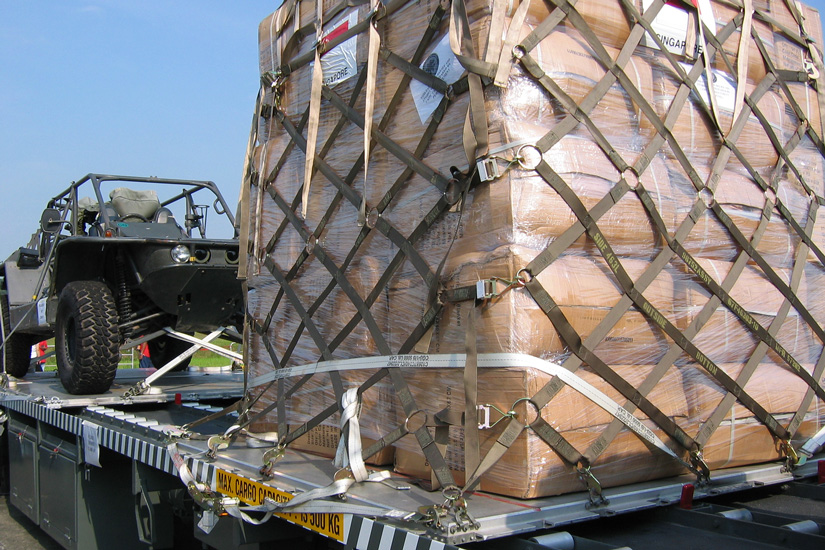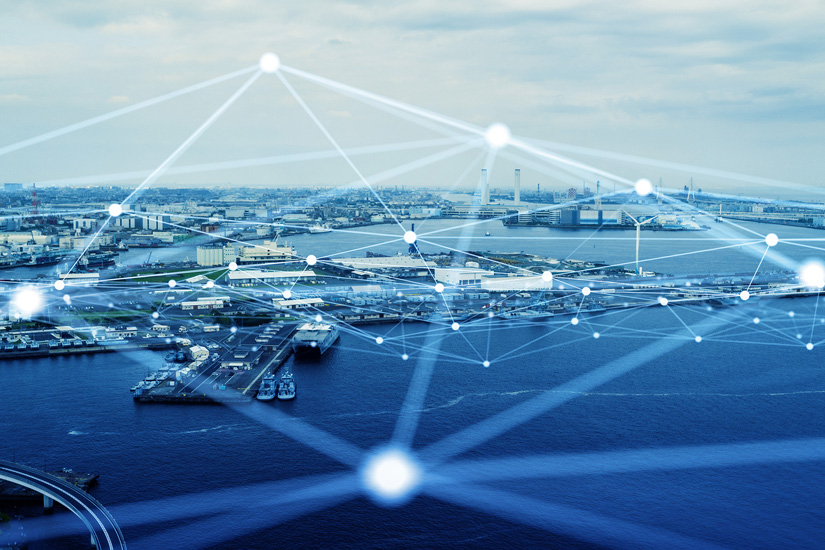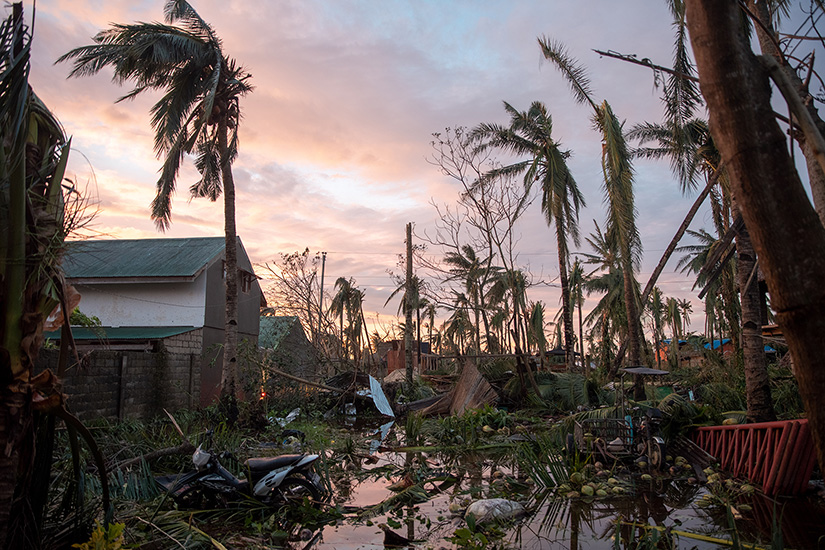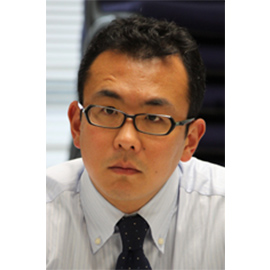With the administration of Prime Minister Fumio Kishida slated to revise Japan’s National Security Strategy (NSS) at the end of this year, there is growing talk of updating the Development Cooperation Charter as well—given its strong affinity with the NSS—in fiscal 2023[1]. Proponents say a new aid strategy is needed to deal with such world-shaking events as the COVID-19 pandemic and Russia’s invasion of Ukraine, as well as to strengthen Japan’s diplomatic initiatives and ensure economic security through the Free and Open Indo-Pacific (FOIP) strategy[2]. Japan already actively promotes the strategic use of official development assistance to enhance its diplomatic presence and protect economic interests, so the question would be to what extent should the ODA budget be expanded to not only meet these needs but to address defense and national security challenges as well. Most aid officials would welcome any additional outlays to support their activities, but some also voice concern about the increasing use of development assistance for programs involving the military.
In the following, I will outline the links between Japan’s ODA policy and national security and examine whether fears over the use of ODA for military initiatives are warranted.
Japan’s ODA in the Security Domain
According to the Constitution, Japan renounces as a sovereign right “the threat or use of force as means of settling international disputes[3].” This is why ODA and other forms of economic cooperation have become such important policy tools. That said, Japan currently allocates only about 0.5% of its general account expenditures (\510.5 billion in fiscal 2022) to economic cooperation[4]. This is just a tenth of its defense expenditures (\5.4 trillion) and half the amount that Japan once provided. Still, Japan’s presence and influence in the international aid community remain strong, befitting its status as the world’s fourth largest donor.
Its aid for initiatives with direct relevance to international security has been focused on humanitarian and peacebuilding assistance in fragile and conflict-affected states[5]. As Kofi Annan once said, “There is no peace without development,” peace requires stable livelihoods and economic development[6]. ODA can make a major contribution to such stability and to economic and social development of not only the recipient country but also that of its neighbors. Japan’s ODA, for instance, played an important role as the civilian complement to the operations conducted by the Self-Defense Forces and other militaries in supporting the reconstruction of Iraq and Afghanistan[7]. Capacity building for law enforcement and other government institutions—including the judiciary, police, border guards, and coast guard agencies—has been provided in a sustained manner, with maritime security emerging as a particularly important area in recent years[8].
These trends were positioned as Japan’s basic policy in the NSS, first formulated in late 2013, thus providing guidelines for ODA and other related policies and filling the gaps in Japan’s foreign aid scheme. Until then, Japan’s ODA had a strictly nonmilitary focus, but the NSS opened the door to assistance to the armed forces of partner countries[9]. In response, the Development Cooperation Charter was established in 2015 as a successor to the ODA Charter, first formulated in 1992; while it upholds the “principle of avoiding any use of development cooperation for military purposes or for aggravation of international conflicts,” the new Charter also eases the requirements for its application by stipulating, “In case the armed forces or members of the armed forces in recipient countries are involved in development cooperation for nonmilitary purposes such as public welfare or disaster-relief purposes, such cases will be considered on a case-by-case basis in light of their substantive relevance[10].”
As seen in the deployment of the Self-Defense Forces following the Great East Japan Earthquake, the military can play an indispensable role in assisting with transportation, communication, and other needs over a wide area in the wake of large-scale natural disasters[11]. This is bound to be especially true in developing countries with fragile social infrastructure. Cooperation with a partner country’s armed forces in civilian domains, such as transporting humanitarian relief supplies, promoting understanding of human rights and international humanitarian law, and sharing knowledge on infectious disease prevention and control, are recognized by the OECD Development Assistance Committee, to which Japan’s development cooperation conforms[12]. So while the Development Cooperation Charter allows for greater involvement of the military, such measures, if applied in an appropriate manner, can be said to be reasonable steps toward broadening the scope of Japan’s policy within the scope of international consent.

A Stronger Emphasis on Security
On April 26, 2022, the-ruling Liberal Democratic Party’s Research Commission on Security submitted its proposals for a revised NSS[13]. Although the media focused on the demand for an increase in defense-related expenditures and claims regarding Japan’s right to strike missile launch bases and other enemy facilities, the proposal also contains a multifaceted study of national security issues in nonmilitary domains, including strategic uses of ODA[14].
With regard to ODA, the section on promoting a Free and Open Indo-Pacific (FOIP) and strengthening cooperation with allies and partners recommends organically coordinating and strategically using foreign policy instruments, particularly by significantly expanding ODA, as a means of maintaining regional maritime security and economic order and developing connectivity[15].
Policymakers have long advocated making strategic uses of ODA. Development assistance can promote the socioeconomic development of developing countries and play an essential role in addressing such global issues as climate change and infectious diseases. For donor countries, though, ODA is also a means of achieving foreign policy objectives. When considering new projects, for example, the Development Project Accountability Committee of the Ministry of Foreign Affairs (MOFA), of which I am a member, remains mindful of national interests, such as relevance for foreign policy and benefits for trade[16]. The relative decline in Japan’s international presence in recent years has fueled a sense of crisis, so there has been a tendency to prioritize Japan’s national interests and maximize effectiveness, given the limited scale of ODA as a policy resource.
One clear manifestation of this policy is the emphasis on quality infrastructure investment. There is great emerging demand for infrastructure improvement as many developing economies rise to middle-income status, and ODA is increasingly being seen as a catalyst to encourage private-sector investment and infrastructure development. In 2013, the Prime Minister’s Office established a council for infrastructure-related economic cooperation, chaired by the chief cabinet secretary, with the aim of tapping into this burgeoning demand. Quality infrastructure investment is one of the pillars of the FOIP strategy and central to economic efforts to promote peace and stability in the Indo-Pacific region. Japan’s approach, which supports the development of regional actors and enhances the financial and political autonomy of partner countries and regions, offers a counterpoint to China’s Belt and Road Initiative and plays a pivotal role in engendering a favorable security environment[17].
The joint statement of the Quad summit of leaders from Japan, United States, Australia, and India, held in Tokyo this past May, contained a pledge to offer more than $50 billion in infrastructure assistance and investment in the Indo-Pacific over the next five years. It also announced the establishment of the Quad Partnership on Humanitarian Assistance and Disaster Relief (HADR) in the Indo-Pacific and outlined enhanced support for regional countries in such areas as infectious disease control, space, cybersecurity, climate change, maritime domain awareness, and other nontraditional security domains[18]. At the June 2022 Asian Security Summit (Shangri-La Dialogue) in Singapore, Prime Minister Fumio Kishida announced the Kishida Vision for Peace, whose first pillar of initiatives was enhancing existing FOIP cooperation by expanding ODA[19]. This is in line with the LDP proposal to revise the NSS by incorporating strategic uses of ODA in the Indo-Pacific.

Should the Development Cooperation Charter also be revised as expected, reference could be made to new modalities of support for invaded and neighboring countries and regions—given Ukraine’s example and the potential for a contingency across the Taiwan Strait. Other items likely to be considered include forms of cooperation with the United States and other like-minded partners, identification of priority regions and sectors from a security perspective, and cooperation schemes for countries that have graduated from ODA. These issues are of overriding importance in not only for maintaining the Indo-Pacific and broader international order but also for enhancing economic security, such as through access to resources and more resilient supply chains. Specific assistance measures, as I will examine next, may include direct ODA support for the armed forces of partner countries.
Where to Draw the Line
In 2021, Japan began providing the Armed Forces of the Philippines with lifesaving equipment used by the Ground Self-Defense Force. This was offered through ODA, based on an agreement signed by the two countries in 2015 for Japan to provide \500 million in nonproject grant assistance for disaster prevention equipment. Training by the GSDF for the use of the equipment began in November[20]. This project, according to Chief of the Ground Staff General Yoshihide Yoshida, is aimed at strengthening relations with the Philippines by creating synergies through the provision of both hardware and software[21]. It was the first example of Japan’s ODA being used to provide equipment used by the SDF to the defense authorities of another country and elicited much interest among researchers in the field of security cooperation[22].
Why should the provision of lifesaving equipment through ODA attract so much attention? There are three reasons. The first, as chief of the ground staff Yoshida noted, is because it creates a mutually complementary relationship between ODA (in the provision of hardware) and the SDF (through capacity building support). Currently, no framework exists for the Ministry of Defense and the SDF to grant new defense equipment that can advance security cooperation with other countries[23]. Thus, even if the Philippine Armed Forces had requested assistance in building lifesaving capacity, the Ministry of Defense would have been unable to fulfill such a request. This is the “gap” in Japan’s foreign assistance scheme to which I alluded above. The utilization of ODA to provide equipment with civilian applications—thereby combining hardware and software—though, would significantly broaden the scope of assistance that Japan can provide and could lead to greater options in the future.
The second reason for the attention the project has received is that it could lead to the disbursement of ODA by the Ministry of Defense. As noted earlier, DAC recognizes the provision of ODA to the armed forces of recipient countries under certain cases. While this project was based on an agreement signed years earlier with the Philippine government and provided through MOFA, DAC does not stipulate the type of ministry through which ODA must be implemented—as long as it is a government agency. Indeed, there are cases in other countries where ODA is provided by defense authorities[24]. Should frameworks be established for the Ministry of Defense to provide in-kind assistance as part of ODA, this would open the door to a much broader range of cooperation, including the provision of equipment for disaster relief activities and seminars in the civilian sector—in addition to furnishing such items in combination with capacity building assistance. Some might argue that such a role for the Ministry of Defense would be inappropriate, given the nonmilitary nature of Japan’s development cooperation. It would also mean more paperwork to confirm whether a piece of equipment can be offered as ODA and restrictions on any items that do not qualify as ODA, as I will explain below.
The third reason for the attention given to the provision of lifesaving equipment to the Philippine military reflects concerns—long harbored by aid workers—about the politicization and securitization of development cooperation. Some members of the general public, too, may be uncomfortable with the mainstreaming of ODA for security purposes, even if they recognize the need to use public funds in the national interest. The Philippines is located south of Taiwan and holds great geopolitical significance for Japan in ensuring the safety of maritime traffic and addressing China’s encroachment in the South China Sea. Assistance for the Philippines, therefore, reflects not only Japan’s interest in enhancing the preparedness of a country that, like Japan, is prone to disasters but also its wish to strengthen the operational capacity of and ties with the Philippine military. (Some might argue that the latter is the main objective). In other words, although the project is ostensibly civilian, there is a strategic dimension to it as well, making it vulnerable to criticism about the appropriateness of such ODA. With Japan’s defense budget likely to grow henceforth, such projects could also become the target of disinformation campaigns to undermine Japan’s credibility with claims that ODA is being used for Japan’s military expansion[25].

Conclusion: Creating a Mechanism for Non-ODA Economic Cooperation
The current Development Cooperation Charter is a revision of the earlier ODA Charter, which was first established in 1992 and revised in 2003. It purports to contribute proactively to the peace, stability, and prosperity of the international community, noting that “such cooperation will also lead to ensuring Japan’s national interests.” Some may see ODA as a handy way of financing initiatives that advance Japan’s national interests, but just with efforts to develop human resources or build infrastructure, tangible benefits through development cooperation are unlikely to materialize in the short term. For assistance to contribute to the creation of a desirable security environment for Japan, a sustained commitment to working with like-minded nations is required in such areas as humanitarian assistance and peacebuilding, capacity building for maritime law enforcement and regional stability, strengthening of the rule of law, sharing of democratic values, and the building of resilient supply chains. It would also be helpful if Japan were able to assist with the building of dual-use infrastructure, such as airport runways, which are currently outside the scope of development cooperation.
Security cooperation undertaken with the militaries of partner countries (also called defense diplomacy), on the other hand, is usually intended to produce direct results in a shorter time frame, helping to achieve such goals as stronger ties with the defense authorities and a bigger regional presence[26]. To this end, thought should be given to enabling economic cooperation through non-ODA mechanisms so that areas not covered by ODA, such as assistance for the militaries of other countries, can be included[27]. This year marks the tenth anniversary of the launch in 2012 of capacity-building assistance by the Ministry of Defense and the Self-Defense Forces. It may thus be an opportune time to consider a new scheme for in-kind grant aid (and a mechanism to ensure accountable use), to augment to the broader range of capacity-building support now being offered as technical cooperation.
These are some of the points that need to be addressed in discussions of Japan’s overseas assistance when the NSS is revised. Rather than heaping new, ill-fitting roles on ODA, separate tools should be developed and strategically combined with traditional schemes to more effectively advance Japan’s national interests.
(2022/8/10)
Notes
- 1 “Dokuji: Kaihatsu kyoryoku taiko kaitei e, kokusai chitsujo gekihen, taigai shien senryaku minaoshi,” Sankei Shimbun, May 16, 2022.
ODA zogaku e taiko kaitei kento: Seifu, kokusai josei no henka han’ei,” Nihon Keizai Shimbun, May 16, 2022. - 2 At a May 17 press conference, Foreign Minister Yoshimasa Hayashi stated that while no decision had yet been made to revise the Charter, he cited factors that will shape that decision, including global issues like COVID countermeasures and climate change, the war in Ukraine and other humanitarian crises, and the pursuit of Japan’s economic security. Ministry of Foreign Affairs, “Press Conference by Foreign Minister Hayashi Yoshimasa,” May 17, 2022.
- 3 Article 9, Paragraph 1 of the Constitution of Japan prohibits the “threat or use of force as means of settling international disputes.” “Threat” is interpreted to mean an attitude suggesting the use of military force to intimidate or coerce another country into accepting one’s demands and is prohibited because it runs contrary to the principle of settling international disputes peacefully and also since it could lead to the “use of force” or “war.” Research Commission on the Constitution, House of Representatives, “Background Materials” (No. 33), June 2003.
- 4 Ministry of Finance, “Reiwa 4-nendo ippan kaikei saishutsu/sainyu no kosei.”
- 5 JICA, “Peace-Building.”
- 6 The full quote is, “There is no peace without development, there is no development without peace, there is no peace and development without human rights,” “Secretary-General’s Remarks at United Nations Private Sector Forum [as delivered],” United Nations, September 24, 2018.
- 7 ODA is also regarded as an essential component of efforts to maintain good relations with the government in Djibouti, where the SDF carries out antipiracy operations.
- 8 Kentaro Furuya, “Chugoku no kaijo chitsujo e no chosen ga motarashita Kaijo-Hoancho no kyapabiru no aratana yakuwari,” International Information Network Analysis, Sasakawa Peace Foundation, July 2021.
- 9 A December 17, 2013, statement on the National Security Strategy by the Cabinet Secretariat calls for a system enabling assistance to parties not adequately covered by existing aid schemes by making further strategic use of ODA and capacity-building assistance and collaborating with NGOs to achieve seamless assistance in security-related fields.
- 10 “Cabinet Decision on the Development Cooperation Charter.”
- 11 The deployment of the SDF for disaster relief in Japan is limited to unavoidable cases when the need is urgent, when other means of support are unavailable, and when their role is public in nature. According to the 2021 white paper on defense, deployments for disaster relief are on the rise, with some 440 to 500 dispatches being made per year between 2016 and 2020. This trend affects the operation and skill levels of the SDF, and the government has asked authorities to reduce the number of requests for deployment. “Kachiku shobun, Jieitai ni tayorisugi? Kansen taisaku, Nosuisho ni kankoku, jin’in kakuho o,” Asahi Shimbun (evening edition), May 10, 2022.
- 12 OECD-DAC defines ODA as “government aid that promotes and specifically targets the economic development and welfare of developing countries.” As a rule, ODA excludes assistance to the military, but there are some cases when it may be included, such as to meet humanitarian or civilian needs. Examples of such exceptions are given in the ODA Eligibility Database, such as “Case 2: Transport of Humanitarian Goods”; “Case 10: Training on Law of Armed Conflict”; and “Case 15: Exchange of Expertise in the Domain of Tropical Disease.”
- 13 Liberal Democratic Party of Japan, “Aratana kokka anzen hosho senryaku to no sakutei ni muketa teigen: Yori shinkokuka suru kokusai joseika ni okeru waga kuni oyobi kokusai shakai no heiwa to anzen o kakuho suru tame no boeiryoku no bapponteki kyoka no jitsugen ni mukete,” April 26, 2022.
- 14 The controversial wording of the right to strike an enemy’s missile sites at launch was ultimately described in terms of counterattack capability. In nonmilitary domains apart from ODA, the proposal calls for strengthening cooperation between the central and local governments and the private sector in countering information warfare; strengthening cooperation between the Maritime Self-Defense Force and the Japan Coast Guard; strengthening cooperation with the US Navy and Coast Guard; emphasizing the importance of security in civilian space development; strengthening cooperation between the Ministry of Defense, SDF, and Japan Aerospace Exploration Agency (JAXA); tapping advanced civilian technology to develop defense technology and strengthening cooperation among industry, government, and academia; strengthening cooperation with local communities; relaxing regulations governing SDF activities and the use of civilian facilities in contingencies; strengthening cooperation with local governments for the protection of citizens; strengthening systems for the protection of Japanese nationals abroad; and addressing climate change.
- 15 The proposal recommends strengthening strategic assistance to key countries by organically coordinating diplomatic, defense, law enforcement, and economic resources to enhance maritime security, maintain a free and fair economic order, and boost regional connectivity. It seeks a significant expansion in ODA to be utilized strategically to promote security in the Indo-Pacific.
- 16 Development Project Accountability Committee, Ministry of Foreign Affairs.
- 17 At the same time, some recipient countries and members of the Japanese aid community have expressed misgivings about the recent focus on national interest in Japan’s aid policy. Conditions regarding the use of Japanese technology to enhance the visibility of Japanese aid and technology have been viewed as tied aid. The 2020 OECD Development Co-operation Peer Review pointed out that the share of untied aid contracts awarded to Japanese companies have increased substantially, potentially obstructing the development of private-sector businesses in the recipient countries. Its Recommendation 2 states, “Japan should continue to completely untie its aid covered by the DAC recommendation, while monitoring the impact of its declining share of untied aid overall and working to reverse it.” OECD Development Co-operation Peer Reviews: Japan 2020.
- 18 Ministry of Foreign Affairs, “Quad Joint Leaders’ Statement,” May 24, 2022.
- 19 Prime Minister’s Office, “Keynote Address by Prime Minister Kishida Fumio at the IISS Shangri-La Dialogue,” June 10, 2022.
- 20 Nonproject grants involve the provision of funds first, rather than for specific projects, with equipment to be procured being selected later based on the intentions of the recipient government. Ministry of Foreign Affairs, “Firipin ni taisuru enshakkan oyobi musho shikin kyoryoku ni kansuru shokan no kokan,” March 26, 2015.
Embassy of Japan in the Philippines, “Japan-Philippines Humanitarian Assistance and Disaster Relief Cooperation Project,” November 19, 2021. - 21 “Yoshida rikubakucho, Firipin rikugun shireikan to kaidan, Bei-Hi kyodo kunren ni suikidan haken kento,” Asagumo Shimbun, June 10, 2021.
- 22 One earlier example was the use of ODA to provide musical instruments to the Papua New Guinea military band when the country hosted the APEC Summit in 2018, with the SDF offering “capacity building” training in the use of the instruments. Japan is considering providing the Djibouti Armed Forces with hydraulic shovels for disaster recovery work and capacity building support by the SDF in 2022.
- 23 To be more precise, such provisions are not covered by Article 9-1 of the Public Finance Act, which stipulates that state property shall not be exchanged or otherwise used as a means of payment, or transferred or loaned without proper consideration, except in accordance with the law. Used equipment that is no longer needed by the SDF, meanwhile, can be transferred to developing countries governments free of charge under the 2017 amendment to the Self-Defense Forces Law (Article 116-3).
- 24 The UK Ministry of Defence, for example, spent some 5 million pounds (about \770 million) of ODA in 2018 aimed at contributing to the social development of recipient countries in line with ODA guidelines. The main activities were defense education and training (which can contribute to the development of effective, accountable, and inclusive institutions), support in maritime charting, and a retraining program for local staff in Afghanistan. “Annual Reports and Accounts 2018-19,” Ministry of Defence, July 22, 2019, p. 54.
- 25 Disinformation is information disseminated with hostile intent to subvert a society or the public interest. The facts may not necessarily be false but are placed in an erroneous context or manipulated and deliberately made to be misleading. See the SPF policy proposal on “Gaikoku kara no disuinfomeshon ni sonae o: Saiba kukan no joho sosaku no kyoi,” February 2022.
- 26 See “Strengthening Japan’s Defense Diplomacy: An SPF Policy Proposal,” published in March 2021, of which I was one of the main authors.
- 27 See Proposal 6 of Akiko Fukushima and Ippeita Nishida’s “Rethinking Japan’s Foreign Aid: Widening the Scope of Assistance from a Security Perspective,” Tokyo Foundation, August 2015.

